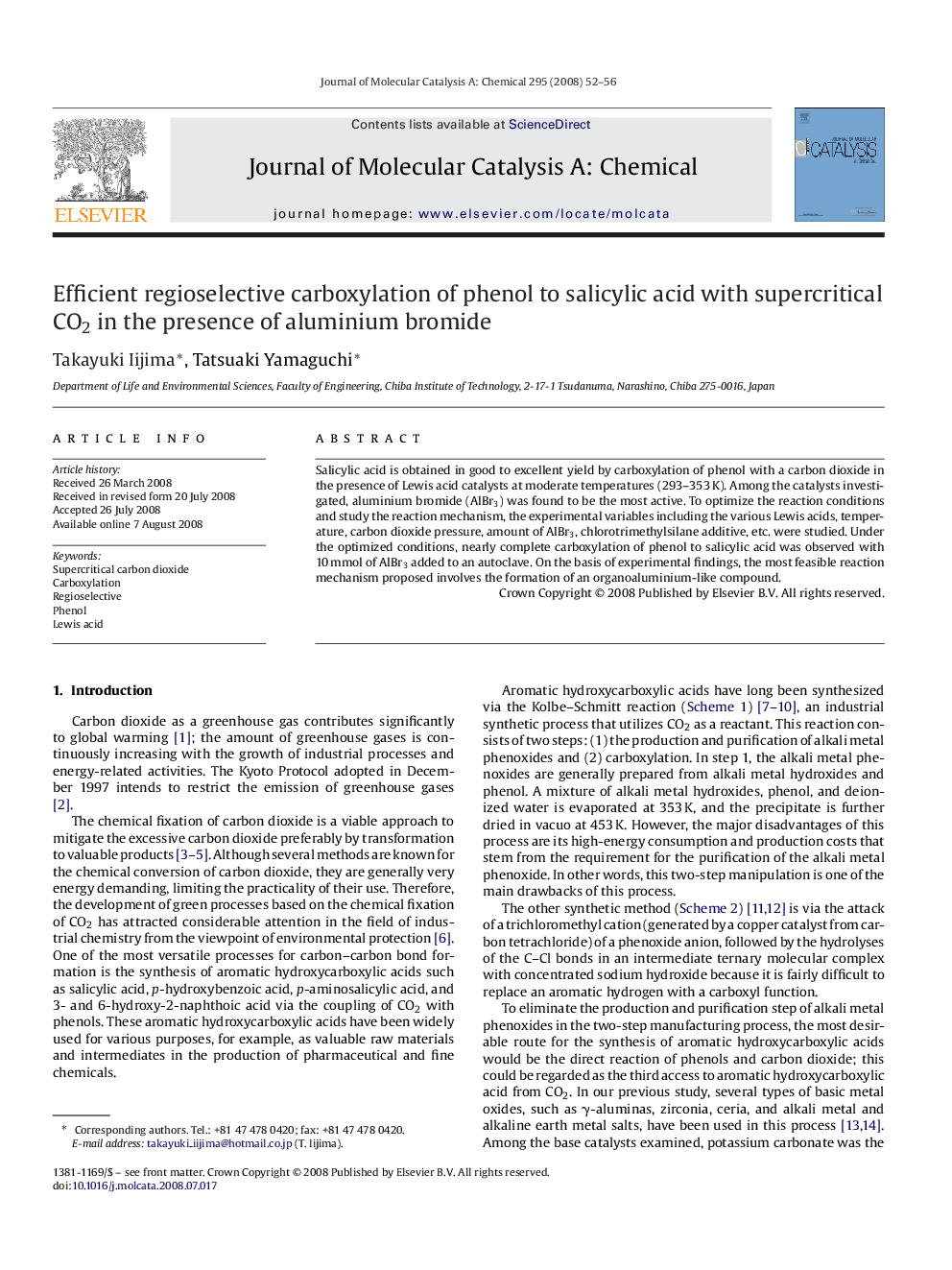| Article ID | Journal | Published Year | Pages | File Type |
|---|---|---|---|---|
| 67749 | Journal of Molecular Catalysis A: Chemical | 2008 | 5 Pages |
Salicylic acid is obtained in good to excellent yield by carboxylation of phenol with a carbon dioxide in the presence of Lewis acid catalysts at moderate temperatures (293–353 K). Among the catalysts investigated, aluminium bromide (AlBr3) was found to be the most active. To optimize the reaction conditions and study the reaction mechanism, the experimental variables including the various Lewis acids, temperature, carbon dioxide pressure, amount of AlBr3, chlorotrimethylsilane additive, etc. were studied. Under the optimized conditions, nearly complete carboxylation of phenol to salicylic acid was observed with 10 mmol of AlBr3 added to an autoclave. On the basis of experimental findings, the most feasible reaction mechanism proposed involves the formation of an organoaluminium-like compound.
Graphical abstractIn the present study, the direct carboxylation of phenol with carbon dioxide smoothly proceeded in the presence of various Lewis acids, especially AlBr3, at moderate temperatures under supercritical conditions. This method is a new, mild, efficient, easy, and clean reaction for the preparation of salicylic acid in excellent yields with high regioselectivity into substitution of carboxyl group in ortho situation.Figure optionsDownload full-size imageDownload as PowerPoint slide
